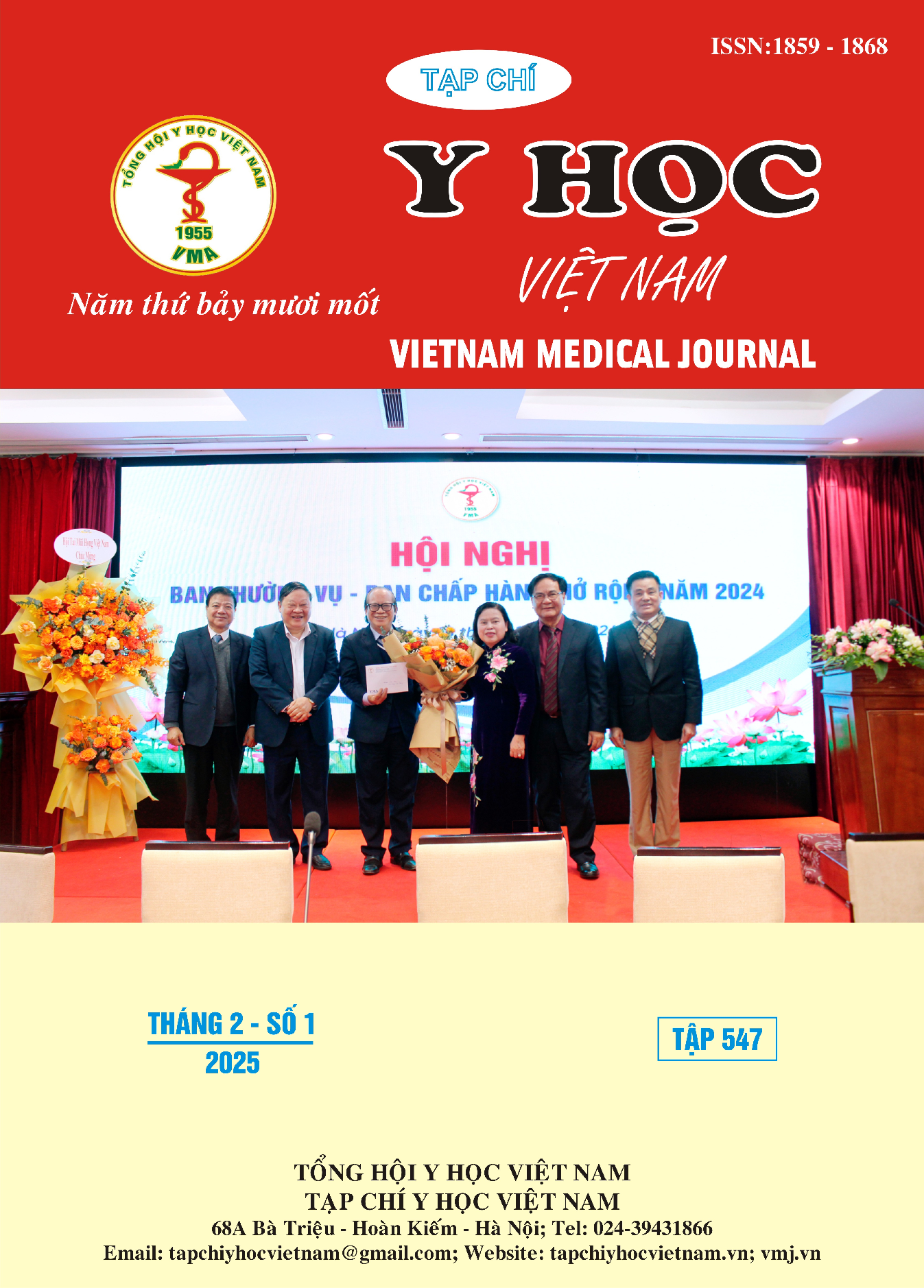SOME CLINICAL CHARACTERISTICS OF INFERTILITY PATIENTS DUE TO TUBAL OBSTRUCTION TREATED AT NATIONAL OBSTETRICS AND GYNECOLOGY HOSPITAL
Main Article Content
Abstract
Objective: To describe the clinical characteristics of patients with infertility due to tubal obstruction at the National Obstetrics and Gynecology Hospital. Subjects and Methods: Cross-sectional description of 212 patients with infertility due to fallopian tubes treated at National hospital of obstetrics and gynecology from August 2023 to April 2024 Results: Secondary infertility accounted for 57.5%, while primary infertility accounted for 42.5% in infertile patients due to tubal reason. The average age in the primary infertility group was 29.3 ± 4.2 years old, and in the secondary infertility group, it was 33.4 ± 5.3 years old. A history of pelvic surgery was present in 32% of the secondary infertility group and 14.4% of the primary infertility group. The rate of Chlamydia infection and bilateral tubal obstruction in the secondary infertility group were 83.6% and 90.2%, respectively. These rates in the primary infertility group were 82.2% and 91.1%. Most patients show no abnormal signs during clinical examination. Blockage at the fimbriae of the fallopian tube was the most common location with 70%, blockage at the ampulla was 13.2%, the isthmus and interstitial blockage were 8.9% and 7.9%, respectively Conclusion: The rate of a history of pelvic surgery was higher in the secondary infertility group compared to the primary infertility group, while the rates of Chlamydia infection and bilateral tubal obstruction were similar between the two groups. Most patients show no abnormal signs during clinical examination. Blockage at the fimbriae of the fallopian tube was the most common location with the rate of 70%.
Article Details
Keywords
Infertility, tubal obstruction, laparoscopy.
References
2. Brugo-Olmedo S., Chillik C., Kopelman S. J. R. b. o. (2001). Definition and causes of infertility. Reproductive biomedicine online, 2 (1), 173-185.
3. Nông Hồng Lê, Nguyễn Ngọc Minh (2013). Nghiên cứu vô sinh do tắc vòi tử cung và tìm hiểu một số yếu tố ảnh hưởng tại Bệnh viện Phụ sản Trung ương. Tạp chí Phụ sản, 02.
4. Hà Thị Hạnh (2016). Nghiên cứu tình trạng vòi tử cung trên bệnh nhân vô sinh được phẫu thuật nội soi tại bệnh viện Phụ sản Trung ương, Luận văn Bác sĩ Chuyên khoa II, Trường Đại học Y Hà Nội.
5. Vũ Văn Du, Đỗ Văn Cân (2017). Một số đặc điểm lâm sàng của vô sinh do tắc vòi tử cung. Tạp chí Y dược học Quân sự, 01, 157 - 163.
6. Lê Minh Tâm, Lê Thị Hồng Vũ (2013). Nghiên cứu giá trị của siêu âm bơm dịch trong chẩn đoán bất thường tử cung - vòi tử cung ở các trường hợp vô sinh. Điện Quang Việt Nam, 12, 546 - 550.
7. Datta J., Palmer M. J., Tanton C. et al. (2016). Prevalence of infertility and help seeking among 15 000 women and men. Human reproduction (Oxford, England), 31 (9), 2108-18.
8. Wang Y.-X., Farland L. V., Wang S. et al. (2022). Association of infertility with premature mortality among US women: Prospective cohort study. The Lancet Regional Health – Americas, 7.
9. Benksim A, Elkhoudri N, Addi RA, Baali A, Cherkaoui M (2018). Difference between Primary and Secondary Infertility in Morocco: Frequencies and Associated Factors. International journal of fertility & sterility, 12 (2), 142-146.
10. Saraswat L, Porter M, Bhattacharya S, Bhattacharya S (2008). Caesarean section and tubal infertility: is there an association? Reproductive biomedicine online, 17 (2), 259-64.


